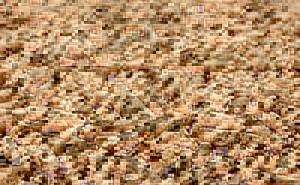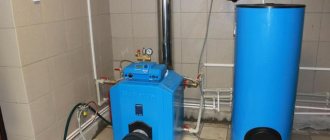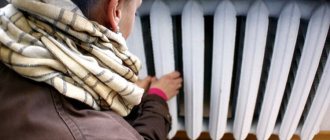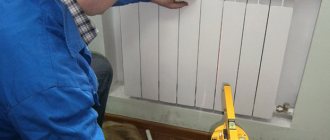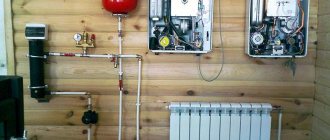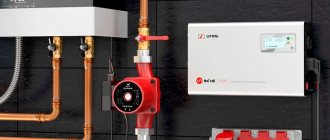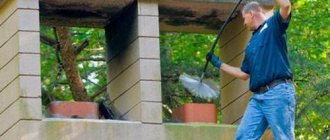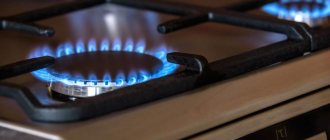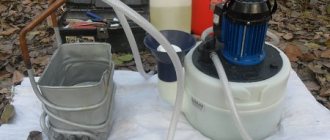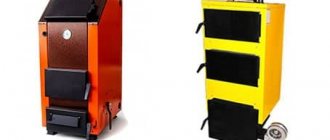Pellet heating is a modified, high-tech installation that allows fully automated operation of boiler equipment. This cannot be achieved when using coal and firewood. Pellet heating boilers have 3 main components:
- boiler with burner;
- storage tank;
- fuel supply mechanism.
What is a pellet boiler?
One of the main disadvantages of long-burning wood boilers is the fuel itself, it is bulky and requires a lot of storage space.
Classic solid fuel boilers for heating private houses are designed to burn wood, coal, coke and other solid fuels. To do this, they are equipped with a large firebox in which fuel is burned, releasing a large amount of heat. Such boilers require constant addition of new portions of firewood and coal - they burn out quite quickly, which leads to a gradual cooling of the heating system.
Long-burning solid fuel boilers that have appeared on the market and are used for heating private houses have pleased their owners with a reduced number of approaches for loading fuel - some of them can operate for up to 8-10 hours, depending on the fuel used. This approach allows you to count on long-term and uninterrupted operation - you can be sure that the rooms will not get cold by morning.
An alternative to long-burning boilers are pellet boilers that operate on special combustible granules - pellets. This fuel releases a large amount of thermal energy and has many advantages over wood and coal:
- Affordable cost - due to the fact that pellets are a product created from various wastes, their cost is in a very affordable range;
- Convenient storage - just fold the bags of granules in any convenient place. You can also provide a spacious bunker for this;
- Convenient dosage - pellets are a free-flowing and very light combustible material, so they can be dosed with an accuracy of a few grams. It is also very convenient to fill them in - you can use a deep spatula for this.
A pellet boiler for heating a home is a rather impressive unit that runs on pellet pellets. Fuel is stored in a bunker, the dimensions of which can be either small or very large. Pellet fuel gradually enters the combustion chamber, where it burns, releasing a large amount of heat. The heat is then absorbed by the heat exchanger.
The temperature difference between the combustion chamber and the heat exchanger outlet is very large - the combustion products cool here from a temperature of 800-900 degrees to 100-120 degrees.

Pellet boilers for home use consist of the following components:
- Bunker – pellet fuel is stored here and taken into the combustion chamber. Some models of pellet boilers have very large hoppers, which allows you to count on the longest warm-up and continuous heating of a private home for several days in a row;
- Auger – ensures a smooth flow of pellets into the working chamber; it is driven by an electric motor;
- Combustion chamber – this is where the combustion process takes place;
The main units and components of the pellet plant.
- Burner – in this module the pellets ignite and burn. We can say that the combustion chamber and the burner are one and the same unit;
- Heat exchanger – this is where heat is transferred to the heating system. Heat exchangers can be very different, ranging from flat steel to multi-pass cast iron;
- Control module – controls the fuel supply to the furnace, checks operating parameters, and monitors safety.
Pellet boilers used for heating private houses also contain many other components - ash collectors, safety valves, ignition systems and much more. But the main ones are the above modules - they are responsible for creating heat and transferring it to the heating system of a private home.
Thanks to the automatic supply of fuel, pellet boilers do not require frequent approaches. One download is enough for several hours, or even several days. Moreover, the most advanced models independently maintain the temperature in the system, regulating the supply of pellets and the combustion of the flame - for this they are equipped with multifunctional automation systems.
Pellets can be stored anywhere and for as long as you want.
They can, the question is what will happen to them next and whether it will be possible to use them. When moisture gets in, the pellets successfully absorb it and crumble. When stored outdoors for a long time, pellets absorb moisture from the air. When storing pellets in rooms with sudden temperature changes (for example, in unheated garages), condensation may form. Whether it is possible to burn with such pellets is something everyone decides for themselves. But no one has canceled the recommendations for storing pellets in dry (possibly unheated) rooms.
How to calculate pellet consumption
Considering the fact that fuel is supplied in bulk or packaged in bags, it is, in principle, not difficult to calculate the consumption of pellets per 1 kW or per 1 m2. There is no need to convert weight units into volume, since delivery always occurs in kilograms, and the heat of combustion of fuel is also measured in kW per 1 kg of weight.
Good quality granules have excellent calorific value; burning 1 kg of such fuel produces almost 5 kW of thermal energy. Accordingly, to get 1 kW of heat for heating a house, you need to burn about 200 grams of pellets. The average consumption of granules per unit area can be easily determined based on the fact that heating each 1 m2 of area requires 100 W of energy
One condition is important: the ceiling height should be within 2.8-3 m. 100 W of heat will be obtained from 20 grams of granules, it would seem simple arithmetic. But it was not there
The figures presented above are correct if the pellet boiler has absolute efficiency - 100% efficiency, but this does not happen in real life. In fact, the efficiency of such heat generators, although higher than that of solid fuel boilers, is still only 85%. This means that after burning 1 kg of pellets in the furnace of the unit, not 5 kW of energy will be obtained, but 5 x 0.85 = 4.25 kW. Conversely, to release 1 kW of heat in pellet boilers, 1 / 4.25 = 0.235 kg or 235 grams of fuel is consumed. This is the first nuance
But it was not there. The figures presented above are correct if the pellet boiler has absolute efficiency - 100% efficiency, but this does not happen in real life. In fact, the efficiency of such heat generators, although higher than that of solid fuel boilers, is still only 85%. This means that after burning 1 kg of pellets in the furnace of the unit, not 5 kW of energy will be obtained, but 5 x 0.85 = 4.25 kW. Conversely, to release 1 kW of heat in pellet boilers, 1 / 4.25 = 0.235 kg or 235 grams of fuel is consumed. This is the first point.
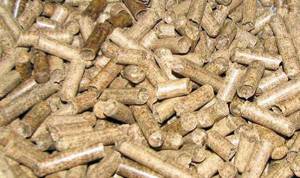
The second nuance is that 100 W of heat per 1 m2 of room is required when the ambient temperature is the lowest, which lasts for 5 days. On average, during the heating season, thermal energy consumption is half as much. This means that the specific heat transfer per unit area is only 50 W. Determining the consumption of pellets in a pellet boiler for 1 hour relative to 1 m2 will be incorrect; the figure will be small and inconvenient. It would be more correct to calculate the weight of pellets burned per day.
Since Watt is a unit of power per 1 hour, then per day for each square of the room you will need 50 W x 24 hours = 1200 W or 1.2 kW. For this purpose, you will need to burn the following mass of pellets per day:
1.2 kW / 4.25 kW/kg = 0.28 kg or 280 grams.
Knowing the specific fuel consumption, we can finally obtain values useful for financial calculations, for example, the average seasonal weight of pellets used per day and per month in a house with an area of 100 m2:
- per day - 0.28 x 100 = 28 kg;
- per month – 28 x 30 = 840 kg.
It turns out that 8.4 kg of fuel is needed per month to heat 1 m2 of a building. At the same time, according to user reviews on various forums, heating a well-insulated house of 100 m2, located in the middle zone, takes about 550 kg of pellets, which in terms of square footage is 5.5 kg/m2. This means that the consumption of pellets in the boiler in the amount of 840 kg per month for a building of 100 m2 is very large and suitable for calculations of poorly insulated houses.
Let us summarize some results in the form of calculation results for dwellings of various sizes. The following are the monthly costs of pellets for heating a private home:
- 100 m2 – 840 kg with poor insulation, 550 kg for good thermal insulation;
- 150 m2 – 1260 kg and 825 kg, respectively;
- 200 m2 - 1680 kg and 1100 kg under the same conditions.
For reference. In many boiler installations, the controller has a function that allows you to see on the display the consumption of pellets in kilograms over a certain period.
Calculation of the daily requirement of pellets for heating a residential building
It is quite easy to determine the amount of fuel needed for a day, month or heating season. You can calculate the approximate consumption of pellets for heating a house of 200 m2, focusing on the following ratio: when burning 1 kg of high-quality pellets, 5 kW of thermal energy is generated. Accordingly, to obtain 1 kW of power, 0.2 kg of fuel will be required.
An algorithm for more accurately calculating the daily need for pellets for heating residential premises is as follows:
- To create a comfortable microclimate, 0.1 kW of thermal energy per hour per 1 m2 is required with a ceiling height of 2.8 to 3.0 m.
- Accordingly, the consumption of granules will be 0.2 kg/kW • 0.1 kW/(h m2) = 0.02 kg/(h m2).
- We multiply this figure by the area of the house (in our case it is 200 m2) and we get: 0.02 kg/(h m2) • 200 m2 = 4.0 kg/h.
- Daily consumption will be 4.0 kg/h • 24 h = 96.0 kg.
To determine heating costs per day, simply multiply the data obtained by the price of a kilogram of pellets. Please note that the calculations did not take into account the costs of delivering fuel, paying for electricity and carrying out routine maintenance. Meanwhile, to ensure the operation of the heating system - the auger motor, electronic controller, as well as the fan and circulation pump - up to 0.5 kW/h is required. These are significant costs and must also be taken into account.
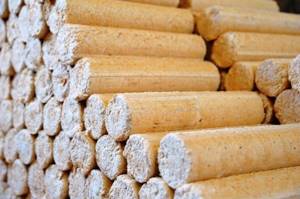
Fuel granules must be strong enough and not crumble when vigorously kneaded with your fingers.
Construction of pellet boilers
Pellets are solid fuel that is produced from wood waste, peat and agricultural waste. In fact, these are pressed pellets of small diameter, up to 5 cm in length. The main advantage of pellets over other types of solid fuel is their low ash content; therefore, the need to remove soot arises less often than when using firewood
If the impact on the environment is important to the home owner, then pellets cause minimal harm to the environment. Operating principles of a pellet boiler - pellets are loaded into a hopper, then they are fed into the firebox, where they burn, releasing heat. The most important thing is that all processes are controlled by automation
Those. if you need to quickly warm up the house before guests arrive, a pellet boiler will burn fuel at maximum speed, feeding pellets into the firebox using an auger. As soon as the required temperature is reached, the equipment will switch to temperature maintenance mode, reducing the fuel supply rate
The most important thing is that all processes are controlled automatically. Those
if you need to quickly warm up the house before guests arrive, a pellet boiler will burn fuel at maximum speed, feeding pellets into the firebox using an auger. As soon as the required temperature is reached, the equipment will switch to temperature maintenance mode, reducing the fuel supply rate.
Burners in pellet boilers are divided into two types - retort and flare. A retort burner is a bowl with slots into which pellets fall and ignite under the influence of hot air. In torch-type burners, pellets are fed to a platform where hot air creates a torch directed horizontally. There are no clear advantages for any type of burner, so when choosing specific equipment it is not a decisive factor.
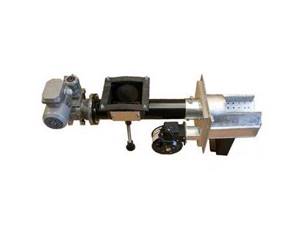
Flare-type burners are used in the Metal-Fach Smart BIO line. Smart BIO is the company’s own development; the burner is made in the form of a trench. Designed for burning pellets and grain. The design of the firebox allows the use of coal and firewood.

Most pellet boilers are equipped with an automatic ignition system. The absence of such a function means that the process must be started manually each time, which significantly reduces ease of use. If there is automatic ignition, the boiler can start heating the house on its own using a timer, sensor or command from a mobile phone.
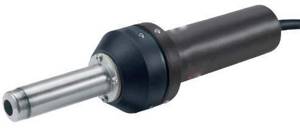
The Metal-Fach SEG BIO model allows you to light a fire from anywhere on the planet by simply sending the appropriate command from your phone or via the Internet. In emergency cases, wood or coal can be used as fuel, but pellets are preferable.
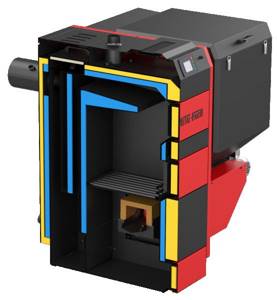
Metal-Fach SD DUO BIO is designed for minimal environmental impact - it is designed for the use of pellets. It can also work on eco-seed coal, wheat grains, and grape seeds. The equipment is automated - there is automatic feeding, automatic ignition, and can be controlled from a cell phone and via the Internet. In addition, boilers of the SD DUO series have a water-filled grate, which increases heat removal. It is worth noting that SD DUO boilers are the flagship in the line of boilers of the Polish company Metal-Fach.
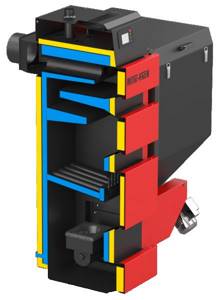
What are fuel pellets and their consumption for home heating with an area of 100 to 200 m2?
If the house is supposed to have an independent heating system due to the constant increase in prices for gas and electricity, it makes sense to consider the type of installation of a boiler with solid fuel elements that runs on pellets. As manufacturers say, such fuel is completely environmentally friendly and has a high efficiency. Let’s verify the reliability of this statement by calculating the consumption of pressed fuel pellets for home heating: 200 m?, 150 m? and 100 m?. Let’s also compare this type of fuel with alternative options.
What are fuel pellets
Fuel pellets are pellets that are made by pressing from wood shavings, wood chips, sunflower husks, cereal and corn waste, peat and even bird droppings. They have the shape of cylinders with a diameter of 4 to 10 mm and a length of 0.8-5.5 cm. For heating in private houses, fuel pellets made from waste from the wood industry and lignin, a real bonding material, are often used.
Pellet fuel is quite economical. It consists of organic matter, has high calorific values and is used virtually without residue. Ash makes up no more than 0.5% of the mass loaded into the combustion chamber, in other words, little maintenance is required for the boiler.
1 ton of pressed fuel pellets releases the same amount of energy as when burning 480 m? gas or 1.6 tons of firewood. Although fuel pellets are inferior to liquid fuel in terms of calorific value, they are actually safe - the smoke released during combustion is odorless and does not pollute the atmosphere with sulfur dioxide.
On a note! Many bad manufacturers include various additives in the raw materials for pressed fuel pellets that make the pellets heavier. The most popular option is sand. But it is very easy to detect low-quality fuel: you just have to burn a few wooden cylinders and see if there is any sand left in the ash.
Pros and cons of pellet fuel
As a type of fuel for the home, fuel pellets are doubtful to most - after all, firewood or coal are much more common. Let's try to understand the satisfactory and negative qualities of pellets. Advantages of pressed fuel pellets:
- easy to transport;
- safe;
- produce colorless smoke and do not emphasize bad odors when burning;
- are stored for a long time;
- when selecting heat supply using pressed fuel pellets, you can select the necessary equipment with automatic fuel supply, in other words, actually completely reduce physical labor.
You need to pay attention! When heating with fuel pellets at home, permits are not required to connect the boiler, unlike the use of liquid-based fuel.
Disadvantages of pellet fuel:
- high cost of heating equipment;
- the purchase, delivery of fuel and warranty service of boilers can cause difficulties if, for example, the house is located in a village remote from the metropolis;
- presence of poor quality raw materials on the market.
Main! Fuel pellets can only be stored in a well-ventilated and dry room - if they come into contact with moisture, they can become damp and become covered with fungus.
Types of equipment for the use of pressed fuel pellets
There are several different options for heating devices for heating rooms with fuel pellets.
Fireplaces and stoves of the “bourgeois” type
This equipment is successfully used in small one-room houses or country cottages. There are different types of structures. Some models are taken into account only for heating, others can be used for heating both air and water.
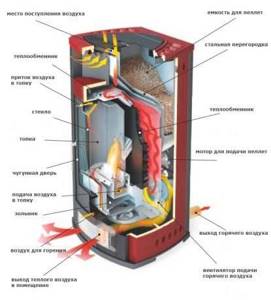
Construction of a pellet fireplace
Good qualities: low price when compared with boilers, unpretentiousness to the quality of raw materials (you can also use other types of fuel - firewood, briquettes, coal). But the list of disadvantages of such systems is very wide:
- there is a high risk of fire if the design or installation is incorrect (especially if we are talking about homemade stoves);
- Fuel is usually supplied manually; even in factory furnaces, the loading compartment is low;
- The power of the equipment can vary from 6 to 15 kW, which allows you to heat a room with an area of no more than 20 m2.
Pellet boilers
Container or modular type devices are used for heating and hot water supply to a building. Their power varies depending on the area of the room. There are fully automatic systems in which human intervention is only needed at the stage of programming and loading raw materials, and universal boilers that work with different types of solid fuel.
The main disadvantage is the high price of the equipment. Moreover, many boilers are very picky about the quality and size of pressed fuel pellets.
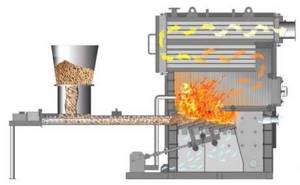
Operating principle of a pellet fuel boiler with automatic fuel supply
On a note! To heat a small country house or country house, a pellet fireplace or stove is more than enough - the purchase of equipment for a boiler room for seasonal use will pay off for a long time. For systematic living, it is better to consider the type of installation of a miniature boiler.
How many pressed fuel pellets are needed for heating?
Costs for heat supply using pellet fuel are calculated according to a multifunctional scheme. To do this, you need to know how much heat is needed to heat the area of the house and the amount of energy released when burning 1 kg of raw materials. Let's consider calculation options for houses with different square footages.
Wood chip fuel pellets: consumption per 100 m?
When using good raw materials, the heat output will be 5 kW per kilogram. And to heat 1 sq. meter of a house with a ceiling height of up to 3 meters will require about 100 W/hour. It turns out that for heating a room with an area of 100 m2? In an hour, about two kilograms of pressed fuel pellets will be consumed (10 kW: 5 kW). You will need 48 kg per day, and 1.4 tons per month.
The heating season lasts on average 150 days (or 5 months). So, the consumption of pressed fuel pellets for home heating is 100m? during the cool season it will be about 7 tons. But if you consider that in autumn and spring there are quite warm and sunny days, when you can save on heating the room, this figure can really be reduced to 4.5-5 tons.
Main! This method of calculation will be productive only for premises that are thermally insulated in accordance with the SNiP recommendations.
Costs for heating a room with an area of 150 m?
If we calculate the consumption of pressed fuel pellets for home heating 150m? According to the generally accepted method, we obtain the following figures:
- for home heating per hour - 3 kg of pressed fuel pellets;
- daily norm – 72 kg;
- expenses during the month - 2.2 tons;
- reserve for the heating period – 11 tons.
You need to pay attention! Expense rate of 100 W/1m? recommended for harsh climates with low sub-zero temperatures and continuous heat supply.
In areas where winters are very mild, for heating 1m? a different figure is used - 50 W/hour per 1 m². In other words, for daily heating of 1m? will require about 1.2 kW or 0.24 kg of compressed fuel pellets, and the costs for a house with an area of 150 m? will be 36kg/day. This means that for a month you will need a little more than 1 ton of fuel and during the season about 5 tons will be consumed. You have to agree, such figures look good.
On a note! To be quite precise, the heat transfer rate of 5 kW/kg needs to be corrected depending on the efficiency of the equipment. On average, pellet boilers have a return rate of about 85%, which means that when burning 1 kg of pellets, 5 kW/kg is released * 85% = 4.25 kW/kg.
Consumption of pressed fuel pellets in a house with an area of 200 m?
Taking into account the above methods, the consumption of pressed fuel pellets for home heating is 200 m? will be:
- for cold winter - about 96 kg/day or 2.9 tons for a month;
- for a relatively mild climate - 48 kg/day or 1.46 tons for a month.

Consumption of different types of fuel
As you can see, the consumption is quite optimistic, so it is not surprising that when designing a heating system for rooms with an impressive square footage, pellet boilers are very often popular.
Main! High-quality insulation work at home and replacing windows with fiberglass bags can help reduce costs by up to 35%, even at low temperatures.
How to choose good pellet fuel
If you purchase raw materials from an honest manufacturer, the consumption of pressed fuel pellets for home heating can be easily calculated, and the quality of heating will be consistently high. But how to find your “own” seller? Naturally, only upon personal inspection of the product.
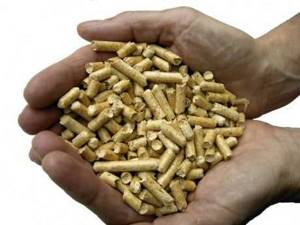
To ensure the quality of the fuel, inspect the pellets with great care.
When selecting pressed fuel pellets, pay attention to the following characteristics:
- Color – granules can be dark brown, yellow or light beige. But a shade of gray indicates that storage conditions were violated and fungus appeared in the compressed wood.
- Length – the fuel supply systems of many pellet fuel boilers are designed for pellet lengths of up to five centimeters. However, when manually loading into a stove or fireplace, this parameter does not matter much.
- Diameter - this characteristic is also of great importance exclusively for special boilers with an automatic feed control system (they are programmed to a width of 4, 6, 8 or 10 mm).
- Aroma - an excellent fuel will have a light smell of wood shavings with sweetish notes of lignin glue. But if the granules smell like pine or sweetness, you shouldn’t buy them.
- Surface structure - the presence of cracks, chips or swelling indicates a violation of the production technology of pressed fuel pellets, poor raw materials or foreign inclusions. Proper fuel should have a smooth, level surface.
- The presence of dust and crumbs is a sign of poor pressing quality and insufficient granule density. Crumbs can also appear when trying to restore the beautiful appearance of damp pressed fuel pellets using forced drying.
On a note! High-quality granules are always sold in sealed packaging that prevents moisture from entering.
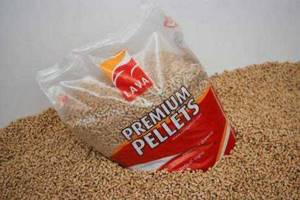
Proper packaging makes storing raw materials easier
Video: real experience of home heating with fuel pellets
When selecting pellet fuel, it is worth considering the boiler capacity and heating area. To avoid difficulties when selecting equipment and during its operation, go to specialists who will not only suggest the appropriate model, but will also be able to help resolve all issues that arise during its operation.
Algorithm for calculating coal consumption
A modern type boiler can operate effectively on both hard coal and brown coal. But if you have a choice, it is better to choose high quality coal - anthracite. It is characterized by the highest thermal capacity and burns almost without a residue. However, the cost of anthracite is higher than other varieties. It is necessary to consider the price of fuel, delivery and its heat capacity, and choose the best option.
There are two ways to calculate coal consumption in a solid fuel boiler. The very first one is elementary, using a bucket. Coal is usually measured in tons, but it is unlikely that your boiler room will have scales to accurately weigh out the required dose for loading.
Approximately, to heat a 200 m² home the following amount of angle will be required:
- In September-October, one bucket per day.
- From November to February - 10 buckets.
- In March-April there are about two buckets.
If you assume that there are 30 days in a month and add up all the values, you can find out the total number of buckets (780 buckets). In kilograms it turns out:
780 x 18 = 14040 kg
Thus, during the heating season, a coal boiler will consume a little more than 14 tons of coal to heat a 200 m² home.
The second method of calculating coal consumption in a solid fuel boiler is more scientific. Combustion of 200 g of coal will require about 1 kW of heat. For comfortable living during the heating season, approximately 50,000 kW of heat is required:
50000 x 0.2 = 10000 kg (10 tons)
Factors influencing the level of solid fuel consumption
It is not difficult to calculate how much a solid fuel heating boiler consumes. It is more difficult to correctly select the initial data to perform calculations.
The following presents the calculation method and at the same time provides a calculation of the consumption of the amount of firewood to heat a home of 100 m². However, first let's look at the source data:
- the type of wood that is selected for kindling;
- wood moisture level;
- efficiency factor of a solid fuel stove or boiler;
- thermal power required to heat the room.
If you've ever used a stove, you're probably aware that when wood burns, different types of wood produce different amounts of heat. Let's say birch logs emit more heat than poplar or pine. This is due to the difference in density and thermal output of tree species. In addition, the volume of firewood per 1 kW of heat energy depends on the moisture content in it. Accordingly, the higher the humidity, the more heat is spent on evaporating liquid from the firewood, and less is left for heating the home. As a result, more fuel will be needed to heat the house.
How rationally the energy contained in the fuel will be used depends on the efficiency of a particular heat source. Let’s say a fireplace or stove releases most of its energy into the atmosphere along with combustion products, so their heat transfer reaches only 60%. At the same time, a solid fuel or pyrolysis (long-burning) boiler operates with a heat output of 80%. These nuances should be taken into account when calculating the cost of heating a home.
It is better to take the value of the thermal power required to heat the house according to the calculation made by the craftsmen during the design of the home. However, often such data is not stored by property owners. Therefore, the amount of firewood and its cost can be determined by the average value of power consumption. It is determined in a standard way: heating 10 m² requires 1 kW of heat under the worst conditions, and the average for the season is 0.5 kW. The average figure for a dwelling with an area of 100 m² will be 5 kW/h.
Good consumption of pressed fuel pellets for home heating 150m2
A good consumption of pressed fuel pellets for home heating of 150 m2 will be from 200 to 220 grams for each kW of heat output of your boiler. If you have a 20 kW pellet fuel boiler, then the consumption of pressed fuel pellets for home heating of 150 m2 will be 4 kg per hour.
Is it possible to reduce fuel consumption for heating a personal home and how to do this?
We insulate the house according to regional SNiP
Modern SNiPs require “excellent” insulation of a house to reduce heat loss through fencing structures - walls and ceilings.
For any region, from Kaliningrad to Kamchatka and from Sochi to Taimyr, standardized values for the thermal resistance of fencing structures have been established. In order to achieve economical fuel consumption for heating your home, you should first comply with the SNiP requirements.
So, in order, for example, in the Urals region to meet the SNiP values for thermal resistance of 3.2 m2*C/W, you will need wall insulation, for example, 150 mm of basalt thermal insulation and 200 mm of floor insulation with the same wool.
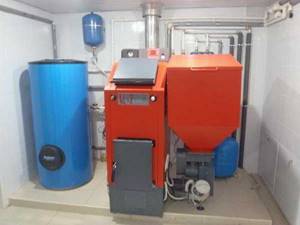
Protecting the house from the wind
During winter, when temperatures are low, every “extra” meter per second of wind load on the fence structure blows calories of heat out of the house, which you “pump” inside by burning fuel.
This means that the less exposure your home is exposed to wind at low temperatures, the better. A simplified option to reduce the impact of wind is a windbreak. Actually, it makes it possible to reduce the wind load on the insulation material on the surface of the walls of your home.
Another option is the use of windproof materials for facade work. The most common example is a profiled sheet of steel. Or, for example, covering the facade with 1 brick facing brick. Or sticker of brick tiles on the facade. In other words, any obstruction that prevents the wind from directly affecting the insulation material in any form.
We heat the incoming air
It is clear that it is impossible to live in a house without clean air. The required amount of air from the street must enter our premises through supply ventilation, and air unsuitable for breathing must be removed through exhaust ventilation. With proper planning of ventilation systems and their correct installation, this is exactly what happens.

However, during winter, we receive the air we need so much at the outside temperature. This is not a problem if the temperature of the incoming air is minus 2 degrees. What if minus 42 degrees?
There is heat loss when it is necessary not only to warm the indoor air, but also to warm the incoming street air needed for breathing.
At the same time, exhaust ventilation removes air from the house with a temperature of plus 22-24 degrees. How to apply this temperature difference?
The most common method is a recuperator, which uses the temperature of the air leaving the house to heat the air entering the house from the street.
To put it simply, a recuperator is a double pipe with a heat exchanger. Cold air from outside enters through the inner pipe, and warm indoor air exits through the outer pipe.
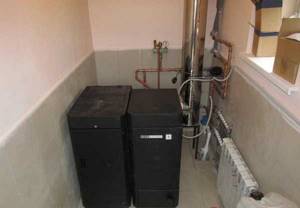
What in the end?
By using proper insulation, wind protection and air recovery, you can achieve up to 30 percent fuel savings. And this is actually the same 1 kg of pressed fuel pellets per hour, which we lack in order to have an economical heat supply with a pellet fuel boiler.
How to go from a consumption of pressed fuel pellets of 3 kg per hour to two kilograms per hour with the same power of the pellet fuel boiler? First, you need to pay attention to the thickness of the floor insulation and what kind of windows you have - the glazing area, the number of chambers filled with air in the bags and their thickness.
A great effect is achieved, in other words, by “local” improvements in terms of insulation - the use of thermally insulated shutters and the addition of a cold vestibule to the doors for entry from the outside.
Heating a private house with pellets - pros and cons
A solid fuel pellet boiler for a home with automatic fuel supply, like any other heating option, has both its advantages and disadvantages. Consideration of the pros and cons helps to make the most reasonable decision regarding the advisability of equipping a boiler room with wood pellet equipment.
The disadvantages are the following:
- Dependence on pellets – a few years ago, good quality pellets were difficult to obtain, which significantly affected the cost of fuel. Today, purchasing pellets of plant or wood origin is not difficult. Refilling a pellet boiler lasts for several hours, days or even months, depending on the chosen model. The user is required to calculate the operating time and purchase the necessary fuel in advance.
- High installation cost. Another disadvantage pointed out by opponents of pellet equipment is its high cost and expensive repairs. Today, the price of equipment is gradually declining due to high market saturation.
The reasons for purchasing pellet equipment are:
- Economical - fuel costs are slightly higher than for a gas boiler, but if you take into account the cost of obtaining permits, the need to prepare design documentation, and pay for gas pipeline installation, the difference becomes not so obvious. Economical pellet boilers for home use less raw materials than convection and gas-generating solid fuel units. Heating costs are also lower compared to an electric boiler.
- Simple installation requirements - the boiler is installed fairly quickly. Combined systems with an integrated fuel tank simply need to be connected to the power supply network and a chimney installed.
- Versatility - most modern models manufactured by domestic manufacturers are capable of using, in addition to pellets, firewood, coal, wood waste, and after replacing the burner, can be converted to use liquid fuel.
- Backup heat sources - an automatic pellet boiler, often has a built-in heating element for heating the coolant. If the solid fuel runs out, the boiler automatically switches to using electricity and continues to heat the house until the pellets are refilled.
Having weighed all the pros and cons of purchasing pellet equipment, many buyers come to the conclusion that it is advisable to purchase a heat generator of this type.
Pros and cons of this type of raw material
Pellets entered the market as a heating product relatively recently, but their popularity is already obvious. And although the prices for equipment that uses them as fuel are not cheap, due to their positive qualities they are becoming more and more popular for heating rooms. Thanks to the variety of their types, you can choose heating equipment according to your needs. If possible, you can choose a boiler with a combustion load for several hours, several days, and even months. In the modern world, more and more attention is paid to the environmental friendliness of the products used. And compressed wood waste becomes an alternative in this case. They are convenient to store; when supplied in bags, they are light and compact in placement. And their quantity is required in smaller quantities than other types of fuel. It is also important that when they burn, the smoke has no odor.
The disadvantage of using them, which cannot be avoided, of course, is the release of ash. And even when using elite brands of wood pellets, it is necessary to clean the boiler at least once every two months. And after the winter season, be sure to completely disassemble and clean the boiler. The storage location is also important. And for better performance of their properties, they should be stored in dry rooms without the possibility of getting damp. Since raw ones can cause the boiler to stop working.
Features of pellet boilers
Naturally, the heating is as efficient as possible. eliminating unnecessary fuel consumption, will be carried out by the boiler only if it is operating correctly. You can check the efficiency of boilers of this type in the following way: you need to measure the temperature of the gases leaving the boiler. A temperature in the range of 120-150 degrees indicates normal operation of the equipment, while at the same time its increase indicates that the pellet boiler is faulty.
However, cold in the house does not always indicate ineffective operation of the equipment. Often the cause of uncomfortable temperatures is heat loss caused by low thermal insulation of the house or poor quality of pellets.
Many country property owners who heat using pellet boilers ask the question: is it possible to use this type of equipment for other fuels? If the boiler’s function was originally designed by the manufacturer to operate on other solid fuels, if pellets are not available, the boiler can be fueled with wood or small coal. But at the same time, the main advantage that a pellet boiler has is lost - its autonomy.
Having considered the advantages of equipment operating on pellets, one cannot help but mention its disadvantages. First of all, this is the need for regular cleaning of the boiler from ash, which should be carried out at least 2-3 times a month. This is a rather “dirty” procedure, often requiring the presence of male hands. Today, boilers with a self-cleaning function have appeared on the market, but their price is quite high. This makes their purchase impractical for heating a small country house.
Quality of pellet granules
The characteristics of fuel pellets determine further heating, its feasibility and functionality. Pressed briquettes for this type of boiler require compliance with storage and movement conditions. When compared with the requirements for liquid and gaseous fuel materials, the situation with pellets is much simpler. It is only important to control the permissible level of humidity in the room.
The quality of pellets can be determined by burning a small number of pellets in the firebox, which will be the determining factor in purchasing a whole batch. The key point here should be quality assurance based on the combustion of experimental samples.
If it is not possible to check the granules in this way, then we offer you alternative methods:
- Visual inspection of granules. The surface of the pellets should be smooth and shiny, without obvious cracks or chips. These indicators confirm compliance with the technological process at the time of manufacturing and pressing, and natural wood was used as a binder.
- Perform a fragility test. High-quality fuel material should not crumble upon palpation, so it is best to use solid granules. Pellets with a violation of the manufacturing process will begin to crumble already at the moment of transfer by auger equipment to the furnace.
- Choose pellets packed in bags. Under such conditions of storage and transportation, fuel will not combine with dust, which negatively affects the operation of the entire heating system.
- You should buy fuel material according to the parameters, sizes and types specified in the passport of the boiler installation itself.
- Study the shade of the granules. Light-colored pellets indicate the use in production of wood materials without bark and unnecessary impurities; they are considered the most effective for heating. Dark-colored granules indicate that the manufacturer used bark and wood waste as raw materials, so their effectiveness will be significantly lower.
We recommend: Review of the Breneran long-burning stove with a water circuit: instructions for use
Criteria for choosing the power of a pellet boiler
How to calculate the power of a pellet boiler? The criteria are as follows:
- Room area. Power is taken at the rate of 1 kW per 10 m2. Household models start from 15 kW. We recommend taking 20% as reserve.
- Efficiency of a pellet boiler. It ranges from 85% to 95%. With the same power indicators, we choose the one whose efficiency is higher.
- The use of alternative fuels will reduce power by 20-40%.
- Using raw pellets will result in a loss of another 25-35% of power.
Heated area
Room area is the main criterion for choosing a boiler. Temperatures in winter can drop well below average. The costs of additional insulation can significantly exceed the cost of purchasing a more powerful modification of the boiler and cause a lot of household troubles.
Wall material
Different materials have different thermal conductivities. The lower the thermal conductivity of the wall, the less heat loss. For the calculation, you can take the thermal conductivity coefficients from SNiP 23-02-2003 and from SP 50.13330.2012.
The material changes thermal conductivity under different operating conditions, in particular with increasing humidity. The thermal conductivity coefficient under different operating conditions can be found on the manufacturer’s website.
Let us give the average thermal conductivity of some materials under normal conditions:
- brick - 0.7 W/(m*°C);
- reinforced concrete - 1.92 W/(m*°C);
- pine - 0.14 W/(m*°C);
- foam concrete - 0.28 W/(m*°C);
- oak - 0.18 1.92 W/(m*°C).
Wall thickness
The thickness of the wall is determined by thermal engineering calculations. The calculation process is simplified by special complexes where the user needs to enter initial data. The machine will carry out the calculations and produce the finished result.
Window and door openings increase thermal conductivity. The larger the area of the openings, the higher the heat loss. The use of modern metal-plastic double-glazed windows can partially solve this problem.
Room temperature
Walls are only part of the source of increased thermal conductivity. Heat exchange passes through the floors and roof. The presence of a basement will further increase heat loss. To maximize resource savings, you need to carefully insulate all structures.
The temperature in the room is considered comfortable: +22 - +240 C. Optimal humidity is 60-80%. Supply and exhaust ventilation must be provided to create complete air exchange.
Pellet quality
The quality of fuel plays a decisive role in heating a home. If you use raw pellets, the boiler power will drop by 25-35%. Part of the energy obtained during combustion will be used to dry low-quality pellets
It is extremely important to ensure optimal conditions for fuel storage. First of all, it should be a dry and warm place
Raw materials also play an important role. In the West, this type of fuel has been used for more than a century. The production system and criteria have been developed and standardized at the state level. Our country cannot boast of this.
No uniform quality standards have been developed for this type of product. Each manufacturing enterprise is forced to rely only on its own, unfortunately, not rich experience. There is a high risk of buying low-quality products.
Pellet boilers can operate on almost any type of solid waste. There are models that support different types of fuel. But the efficiency of such boilers is usually much lower.
Other factors
Other factors influencing the choice of a pellet boiler include:
- geographical area;
- average annual precipitation;
- average wind strength and direction;
- conditions and frequency of operation of residential premises;
- type of fuel used;
- quality of materials from which the boiler is made;
- ceiling height;
- price.
It is simply impossible to take into account all factors in the calculation. Their performance can change quite significantly over time. For example, winter may be colder than usual. Or the wind speed, instead of the usual 4-6 points, will be 8 - 9.
Pellet fuel consumption
To correctly assess the heat loss of your home, there are many different methods on the Internet that allow you to calculate fuel costs for heating your home. But the fact is that these methods are based on the use of SNiP and other regulations, however, in practice everything turns out differently. If we take, for example, a room with an area of 130 m2 as a basis, then its heat loss in low temperature conditions often does not exceed 100 W per hour. This indicator primarily depends not on the heating system itself, but solely on the design of the room itself. In order to fully understand the question of which fuel is the most profitable during the heating season, it is better to calculate the consumption of several types of material at once. Having complete information, you can create a special table to obtain data on fuel consumption. Anyone can check whether a pellet boiler is doing its job effectively; to do this, you need to measure the gas temperature at the outlet. The optimal temperature is considered to be in the range of 120-150°C.
Recently, many owners of private houses use pressed pellets made from waste of a wide variety of combustible materials to heat the premises of their homes. These granules are called pellets. Those homeowners who are just planning to install hot water boilers in their home that use pellets as fuel are interested in the consumption rates of this fuel material, as well as the amount of heat released during its combustion. We will try to cover these issues in as much detail as possible within the confines of this short article. As a rule, the choice of one or another type of solid fuel boiler is based on the availability and cost of fuel. In addition, many owners of private houses try to choose equipment that requires minimal maintenance. In other words, there is no need to fill the firebox every day, remove combustion products, etc. Therefore, among a wide range of types of boilers operating on solid fuel, pellet equipment is the most in demand.
Conclusion
Pellet boilers are in growing demand - automated units eliminate the need to regularly load fuel manually. When calculating how many pellets you will need for a heating season, perform the calculation for pellet fuels with different calorific values to find out which of the available options is preferable.
Saving on energy quality results in inefficient fuel combustion, that is, unnecessary financial costs. In addition, heating equipment will fail faster.
Don't forget that improper storage causes wood fuel to accumulate moisture, which reduces its thermal efficiency. When calculating heating costs, be sure to include the cost of energy delivery.
Video on the topic:
Fuel quality criteria
As you might guess, in order to release a significant amount of thermal energy, pellets must have the appropriate quality. Unfortunately, given the ever-increasing popularity of this heating method, low-quality fuel samples from unscrupulous manufacturers or outright scammers have begun to appear on the market. Of course, the use of handicraft technologies does not allow achieving effective heat transfer. There is a common misconception among many owners of pellet boilers that fuel consumption depends on the color of the pellets. This is not true at all. High-quality dark-colored pellets are made on the basis of wood fractions, which contain tree bark, light yellow ones are made from waste from the furniture industry, and dark brown pellets are made from logging waste. High quality pellets have a fairly high density, the numerical value of which exceeds 1, so they must sink in water. Also, an important parameter that determines the quality of this type of solid fuel is the amount of ash remaining after complete combustion of the pellets (ash content). According to standards adopted in a number of European countries, this figure should not be more than 1.5%. In other words, after burning 10 kg of fuel, no more than 150 g of ash should remain. If this indicator is higher, a significant amount of slag will be formed during combustion. And this significantly reduces the performance of the boiler.
In addition to the characteristics described above, high quality pellets must have the following characteristics:
- The humidity of the pellets should not be more than 10%, otherwise the consumption of pellets will be significantly increased due to the need to compensate for losses in heat capacity.
- The dust content should not exceed 11%. Exceeding this indicator is accompanied by an increase in ash content.
The packaging must be sealed. The most optimal option is when the granules are sold in special bags with a waterproofing film on the inside. Such packaging allows the granules to maintain their original quality characteristics for many years. Currently, 1 kg of fuel costs from 6 to 10 rubles. If a large-volume bunker is used with the boiler, it is best to purchase fuel in large bags (big bags). The mass of one such bag is 900 kg.
